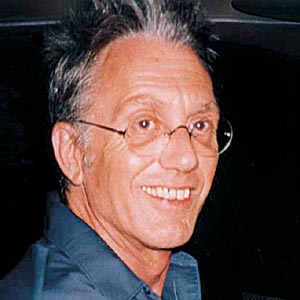
Photo: Courtesy of studimonetari.org.
Hailed by his former instructor, Jim Harithas, as “the first great artist of the 21st century,” the late artist Mark Lombardi‘s work was intriguing, complicated, and visually stunning. Lombardi, who died in 2000, illustrated the interplay between international agents and their fiscal maneuvers, tracing the complex paths of shadowy financial transactions between members of the world’s political elite.
Patricia Goldstone has written the first comprehensive biography of the conceptual artist with Interlock: Art, Conspiracy, and the Shadow Worlds of Mark Lombardi (Counterpoint Press, 2015), which is full of details from those who were closest to him: family, friends, colleagues, and past loves. Goldstone weaves US historical records into the course of the artist’s life, citing scandals, political intrigue, and economic turbulence along the way. The book is split in two parts: the first recounts the artist’s life from his childhood and college years spent in and around Syracuse, NY, to his work and political ties to Houston, TX, and his eventual move to New York City in 1997, while the second gives thorough explanations of the agents that populate his diagrams.
Curator Deven Golden once asked his friend in an interview in BOMB if he was afraid that his work might anger the wrong people, to which Lombardi replied “Nah, there’s nothing in them that wasn’t already in the New York Times or Washington Post. I let those big newspapers vet the material first in their articles.”
Part-data visualization/part-investigative reporting, Lombardi’s practice brought to the surface information that sometimes hid in plain sight. Yet given his relationship to Texas politician and attorney, Frances “Sissy” Farenthold, Lombardi seems to have gained access to juicy bits of information not intended for public consumption. For example, Farenthold initiated a series of inquiries into Texas politicians and their backers in the early 1970s; Lieutenant Governor Ben Barnes (whom Lombardi featured in an early drawing) was rumored to have benefited from shady financial dealings in what came to be known as the Sharpstown scandal. Later on, Lombardi would set his sights higher, creating connections between US government agencies and those in power to dubious entities at home and abroad.
Still from
Mark Lombardi – Kunst und Konspiration (2012).
Image: Vimeo.com.
Much of Lombardi’s practice was research-based, with the information he sourced written down on index cards (Goldstone notes that he “persuaded his dealers not to exhibit them along with his drawings on the grounds that they were not actually his art but ‘a side element, a private code.'”); some 40,000 were thought to be part of his personal archive at one point, as remembered by art collector Mickey Cartin. Goldstone then reveals a curious detail: given that much of Lombardi’s work focused on the Bush family, only four cards about their dynasty remain in the 14,000 currently housed in New York’s Museum of Modern Art.
In 2001, the FBI had visited the Whitney Museum of American Art and asked that it remove one of Lombardi’s artworks concerning the BCCI (The Bank of Credit and Commerce International), which allegedly revealed ties to terrorist networks. (Saudi banker Khalid bin Mahfouz is BCCI’s former director, and his sister was married to Osama bin Laden.) The museum refused to remove the artwork from public view. Goldstone describes the incident in the book, which troubled the artist’s mother: “It has always bothered me, just exactly how the FBI knew it was there.”
Mark Lombardi, Raul & Carlos Salinas (1999).
Image: Courtesy of artnet.com.
Throughout the book, Goldstone repeatedly refers to the questionable circumstances surrounding Lombardi’s untimely death. Discrepancies abound in the testimonies given by the police (“reports never established a time of death”) and by those who knew him as an artist obsessed with finding the thread that connects the shadow world to democratically-elected officials.
“Our post-9-11 age would have been Lombardi’s glory days. I don’t mean this lightly. We need him,” Jerry Saltz wrote in a 2003 essay in the Village Voice.
It is clear from Goldstone’s in-depth research and true to Lombardi’s methodical art practice that without him, we may never get the whole story.